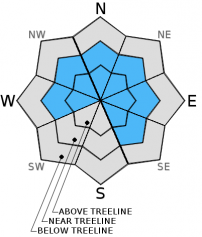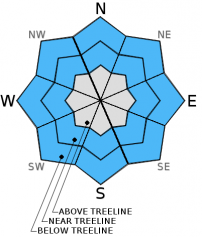| Thursday | Thursday Night | Friday | |
|---|---|---|---|
| Weather: | Cloudy with scattered snow showers | Cloudy with scattered snow showers | Mostly cloudy with a slight chance of scattered snow showers |
| Temperatures: | 21 to 28 deg. F. | 12 to 18 deg. F. | 22 to 29 deg. F. |
| Mid Slope Winds: | Variable | West | Variable |
| Wind Speed: | Light | 10 to 15 mph in the evening decreasing overnight | Light |
| Expected snowfall: | up to 1 | trace to 0 | 0 |
| Thursday | Thursday Night | Friday | |
|---|---|---|---|
| Weather: | Cloudy with scattered snow showers | Cloudy with scattered snow showers | Mostly cloudy with a slight chance of scattered snow showers |
| Temperatures: | 17 to 24 deg. F. | 7 to 14 deg. F. | 19 to 26 deg. F. |
| Ridge Top Winds: | West | West | West |
| Wind Speed: | 10 to 15 mph with gusts to 25 mph | 10 to 20 mph with gusts to 30 mph | 10 to 15 mph in the morning becoming light in the afternoon |
| Expected snowfall: | up to 1 | trace to 0 | 0 |

























